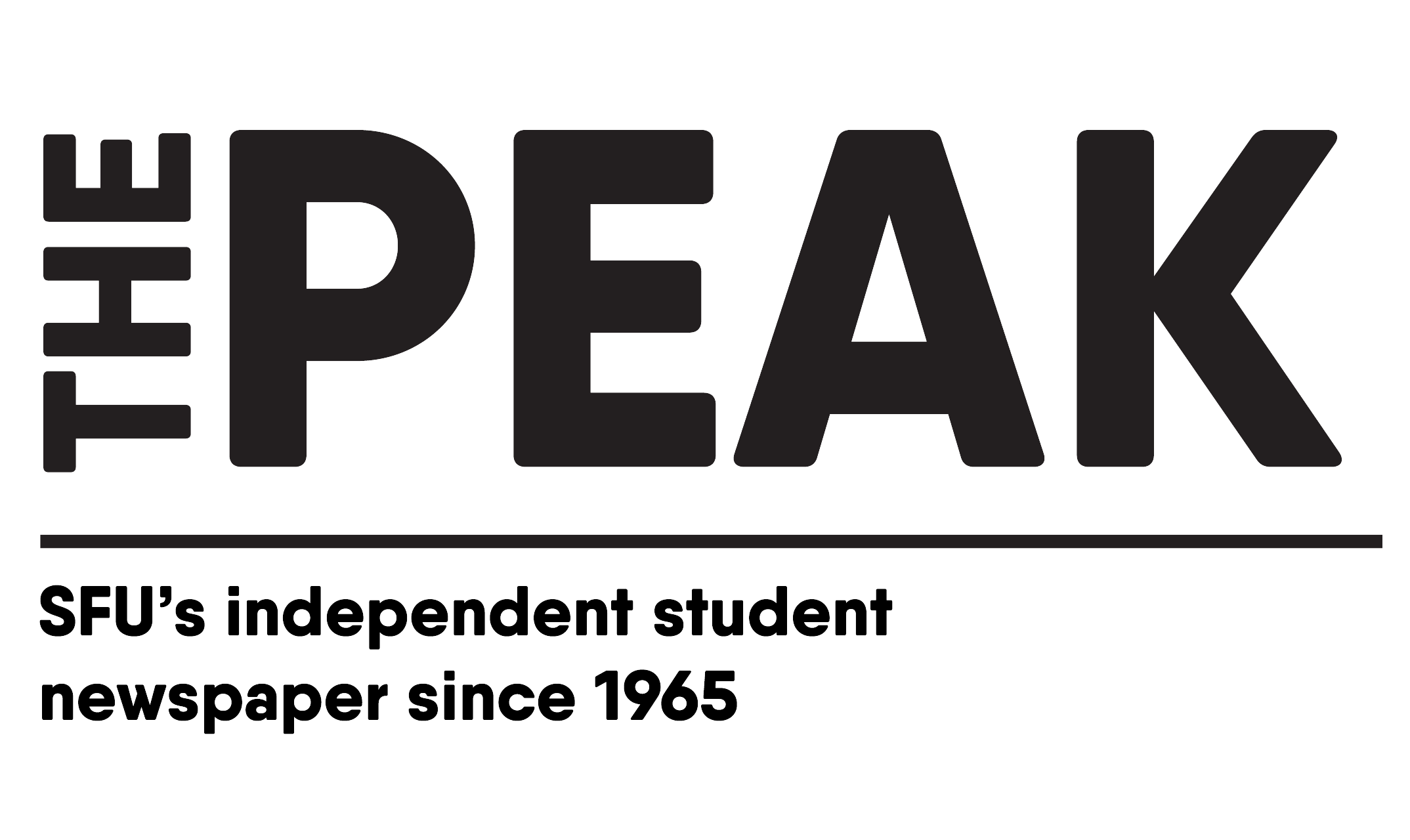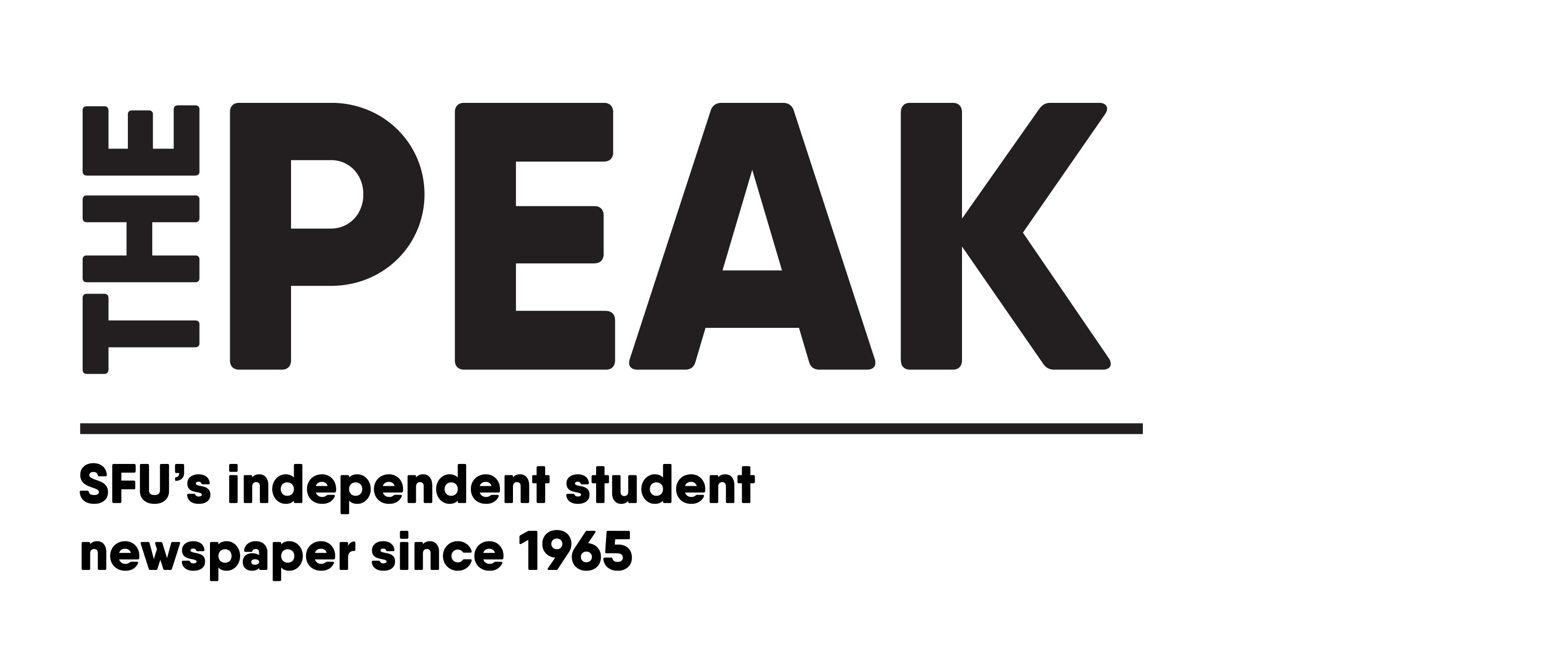By: Ashima Shukla, Staff Writer
A graphic designer, photographer, videographer, painter, writer, and textile artist, Shafira Vidyamaharani’s practice resists definition — and that’s the point. Now a graduate student in SFU’s communication program, they are building a career that merges intuition with intellect, art with community, and personal memories with collective futures.
Even as a child, art was the language Vidyamaharani best understood. Their mother enrolled them in art competitions, and their father used drawing to explain complex ideas. “[Art] has always been in me, and passed down through me,” they told The Peak, smiling under the summer sun on Burnaby campus.
Vidyamaharani was never formally trained in graphic design. They remember first making One Direction graphics on Tumblr, which evolved into designing for their school and the district student council. In fact, they never expected to build a creative career in Vancouver, which “forces out talented creatives” due to high rent, few opportunities, and a difficult grant system.
Still, their practice grew through connections. Volunteering to design for a friend’s show led to more paid work, word-of-mouth recognition, and a steady presence within the DIY music and cultural production scene. In this, social media became their de facto agent, their portfolio, and their stage.
Understanding graphic design as also a service, they find themselves frequently negotiating between their artistic vision and the client’s needs. At this point in their practice, they reflect, they are able to be more selective with the work they take on. “Even just two years ago, this isn’t something I would be able to do,” they shared. Yet, they remain mindful of what it means to commodify something so personal.
“The ethics of representation, of an idea, of a concept, of a spirit, and how it can be expressed through the graphic form” fascinates Shafira Vidyamaharani
“My mum had a point. You should leave your art as your hobby because it is something that can be sacred,” they reflected. “I am really glad I don’t solely depend on art to survive, that I have other skills that I can sell my labour with.” Still, their eyes lit up as they realized, “it feels so good knowing I was able to navigate my difficult relationship with commodifying my graphic practice.”
Preferring not to follow trends, Vidyamaharani instead finds inspiration from nature and the everyday. Living by the water, running, biking, and photographing landscapes all help them reset. “I take a lot of retreats into nature to gain inspiration,” Vidyamaharani said, pointing to the asymmetries and quantitative reasoning in nature that guides their designs. Collaging, for instance, allows them to lean into the unknown, where the value lies not in the final product but in the interaction with materials, in the process itself. In this way, they find graphic design to be deeply intuitive.
Placing themselves in their work has been at the heart of Vidyamaharani’s practice. “So much of the graphic design literature that is taught to us is so eurocentric,” they reflected, pointing to the absence of designers like W.E.B. Du Bois or Emory Douglas in the canon. In contrast, their own visual world was shaped by Islamic calligraphic art — a sacred form of typography rooted in nature and design principles like the golden ratio and modularity around Islamic architecture. “I love typography so much, I make sure I am focusing on it,” they said.
“I don’t think that my practice would exist without the opportunities that community has presented to me,” they said. Working with local producers, DJs, and musicians, mediating and co-creating culture is part of how they see themselves instilling a cultural heritage in Metro Vancouver, “to build a cultural heritage that hasn’t been written about.” In this, they give a heartfelt shoutout, for example, to their friends at Made by We, who brought them into designing for a festival, and their ongoing collaborations with iDream library that continue to challenge and inspire them.
Now in their fourth year as a freelance graphic designer, Vidyamaharani is also merging their creative practice with academic inquiry in their graduate research project. “The ethics of representation, of an idea, of a concept, of a spirit, and how it can be expressed through the graphic form” fascinates them.
To young artists, and to their 18-year-old self, Vidyamaharani offers love and encouragement. “Don’t worry as much, everything truly does fall into place. I have fallen into some of the best parts of my life by accident.” Vidyamaharani continued, “The less stress you go through life with, the easier things get.” They concluded by reflecting, “Easier said than done, I know. Still, follow your dreams! Follow your heart. Follow your passion. Laugh more.”




